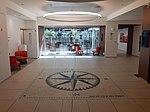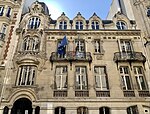Organisation internationale de la Francophonie

The Organisation internationale de la Francophonie (OIF; sometimes shortened to the Francophonie, French: La Francophonie [la fʁɑ̃kɔfɔni], but also called International Organisation of La Francophonie in English-language context) is an international organization representing countries and regions where French is a lingua franca or customary language, where a significant proportion of the population are francophones (French speakers), or where there is a notable affiliation with French culture. The organization has a population at over 1 billion people. The organization comprises 88 member states and governments; of these, 54 states and governments are full members, 7 are associate members and 27 are observers. The term francophonie (with a lowercase "f"), or francosphere (often capitalized in English), also refers to the global community of French-speaking peoples, comprising a network of private and public organizations promoting equal ties among countries where French people or France played a significant historical role, culturally, militarily, or politically. The modern organisation was created in 1970. Its motto is égalité, complémentarité, solidarité ("equality, complementarity, and solidarity"), a deliberate allusion to France's motto liberté, égalité, fraternité. Starting as a small group of French-speaking countries, the Francophonie has since evolved into a global organization whose numerous branches cooperate with its member states in the fields of culture, science, economy, justice, and peace.
Excerpt from the Wikipedia article Organisation internationale de la Francophonie (License: CC BY-SA 3.0, Authors, Images).Organisation internationale de la Francophonie
Avenue Bosquet, Paris 7th Arrondissement (Paris)
Geographical coordinates (GPS) Address Nearby Places Show on map
Geographical coordinates (GPS)
| Latitude | Longitude |
|---|---|
| N 48.86 ° | E 2.3033333333333 ° |
Address
Avenue Bosquet 21
75007 Paris, 7th Arrondissement (Paris)
Ile-de-France, France
Open on Google Maps











